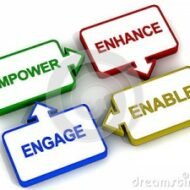Posted by Managementguru in Business Management, Decision Making, Human Resource, Labor Management, Strategy, Training & Development
on Mar 23rd, 2014 | 0 comments

INDUSTRIAL RELATIONS STRATEGY THE INDUSTRIAL DISPUTES ACT, 1947: An Act to make provision for the investigation and settlement of industrial disputes, and for certain other purposes. It is a universally accepted fact that maintaining industrial peace is of significant importance as it yields higher productivity and arrests industrial unrest. Conflicts manifest themselves in the form of strikes, poor productivity, absenteeism and attrition. These are symptoms of growing conflicts which the management has to weed out right at the start and remove the discontent amongst their employees. Relationships can always be complex or they can always be simple depending on your attitude, how you look at it. In a larger scale, definitely it is a complex phenomenon that has to be dealt with utmost care, as feelings and emotions take lead during problem situations and logic and discipline are conveniently forgotten. Employee Participation: Employee participation is the only way to promote industrial democracy and peace. In course of time it becomes a business strategy and takes the shape of self-management when the pressure of management is eased out to a larger extent. Always remember that the confidence on your workers proves to be the key that opens the door of trust and reciprocation. Workers also understand the storm and turbulence that the management experiences in terms of finance and selling. Proper Training: Proper training given to the heads of various departments in terms of attitude, language, behavior, presence of mind and employee motivation helps the management to avoid unnecessary conflicts. Training given to the union leaders of various capacities on the other hand boosts up their confidence and make them feel as “one” with the management. Social relations are always not to be taken for granted as it determines your integrity and success in the business society. Some golden rules or strategies to make your working smooth and avoid conflicts and strikes. (Works out for both sides) Put yourself in other man’s shoe to know or understand why the other side has taken that particular “stand” or position and many a time we come to know it is only due to misguided apprehensions, mistaken beliefs or just fear of change that is an inherent quality in humans. They resist change as it is simply their habit. The negotiator who represents your side should be agreeable, affable and he should be able to project your ideas and claims in a proper manner and also he should protect your interest. See to it that he doesn’t fall bait to some attractive offers from the other side. Approach the problems with an “open mind”; don’t give space for rumors and gossips. Let the conversation between you and your opponents (not enemies) be fair and square and straight forward. Also don’t try to beat around the bush as it is a colossal waste of useful time and energy and of course your hard earned money. Consider union as a partner and not a “necessary evil”. You have to “work-with” and “live-with” them. In fact smooth relations make work easier and concern for the welfare and security of your employees make them come closer to you and contribute more in terms of productivity. Identify the anchor persons who can be dealt “in person” to make things easy for both sides and find out what their very idea of negotiation is, to finish the deal with minimum effort. The management must create a sense of belongingness in the minds of employees. Survival and success of an organization depends solely on the very survival and success of their workers who believe that work is...

Posted by Managementguru in Accounting, Financial Accounting
on Feb 14th, 2014 | 0 comments

Double Entry System of Book Keeping Accounting is not to be feared Accounting is a subject that is intertwined with our day-to-day lives yet people think it is quite a complicated subject to deal with. The fancy of the subject is such, that many of us fail to understand that it is quite simple, un-complicated and all it talks about is balance. Rather than barging into equations that make us grip with fear, let us start with the basic question of WHAT=WHO? “What” deals with whatever we have in hand or otherwise ASSETS and “Who” deals with the claims, both other’s claims and our own claims on the product we have in hand. Other people’s claims are known as LIABILITIES and our own claim on the product is called Owner’s equity. Now if we take “WHAT=WHO”, it can be translated into the following equation ASSETS= LIABILITIES+OWNER’S EQUITY Accounting: Get Hired Without Work Experience UNDERSTAND WHAT = WHO What = Who Stuff = Who Assets = Who Assets = Who Has Claim Assets = Claims Assets = Other People’s Claims + My Claims Assets = Liabilities + My Claims Assets = Liabilities + My Equity Assets = Liabilities + Owner’s Equity Simple Equation to Remember There are two types of claims: other people’s claims and my claims. Assets = Other People’s Claims + My Claims Claims are also referred to as equities. Assets = Other People’s Equities + My Equity. Accountants have a fancy word for other people’s equities. These are known as liabilities. Assets = Liabilities + My Equity Because I am the owner, we will call My Equity Owner’s Equity. Assets = Liabilities + Owner’s Equity This is the formal equation of accounting. The structure of accounting is based on this one perspective. Accounting students memorize it. And try to decipher it. You are way ahead of the game because you understand that what = who! WHAT ARE ASSETS AND LIABILITIES Assets are on the left of the Big T. Asset accounts increase with debits. Liabilities and Owner’s Equity are on the right of the Big T. They increase with credits. Income ultimately increases owner’s equity so it behaves like owner’s equity: it increases with a credit. Expenses increase with debits. The best way to improve your expertise in accounting procedure is to practice; in due course your hand movement and thought process start synchronizing. Examples of Asset accounts – Vehicles, Furniture, Cash Examples of Liabilities accounts- Accounts payable, Owner’s equity Purchasing a TV- Example ASSETS (what) = LIABILITIES + OWNER’S EQUITY (who) Say if you invest Rs.5,000 as down payment from your end and take a loan of Rs.20,000 from the bank to purchase the product. Now, the bank has a claim on your asset to the extent of Rs.20,000 and your claim is Rs.5000. Here liability is Rs.20,000 and Owner’s equity is Rs.5,000. On the asset side we have a TV worth Rs.25,000 You can see that the value of the asset is equal to the value of liabilities, i.e., what = who. ASSETS = LIABILITIES + OWNER’S EQUITY 25,000 = 20,000 + 5,000 Just how you see a hand with five fingered palm on one side and five fingered nails on the other side, this accounting equation has two different perspectives to strike a balance between assets and liabilities. The Big Balancing ‘T’ The Big Balancing ‘T’ BIG “T” FOR PRODUCT PURCHASE WHAT (ASSET) VEHICLES (Rs.25,000) = WHO (LIABILITIES) ACCOUNTS PAYABLE (Rs.20,000) + PAID IN CAPITAL (Rs.5,000) Do I Debit or Credit? When we receive cash for completing a consulting job we know that cash has increased so we debit cash. The corresponding account...




